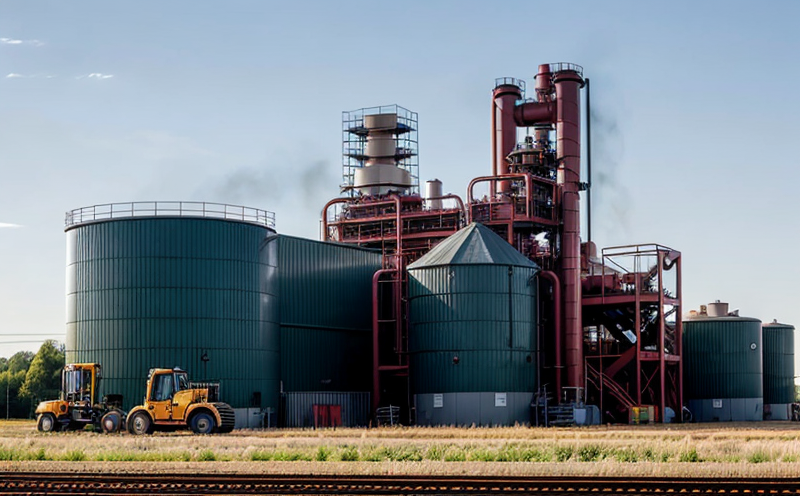ISO 6395 Road Roller Noise Measurement
The ISO 6395 standard provides a robust framework for measuring noise generated by road rollers during operation. This service is essential for ensuring that machinery complies with stringent environmental and occupational health regulations, thereby enhancing the safety of operators and nearby populations.
Accurate noise measurement is critical in assessing whether the equipment meets the specified limits outlined in ISO 6395. This standard sets forth guidelines on how to perform sound level measurements in a controlled environment using appropriate instrumentation and procedures. The testing process involves placing microphones at specific distances from the road roller, ensuring that all relevant parameters are captured accurately.
The noise generated by machinery such as road rollers is not only a concern for those who operate it but also for public health. Excessive noise can lead to hearing damage over time and create an unpleasant environment for nearby residents. By adhering to ISO 6395, manufacturers ensure their products meet the highest safety standards.
The testing process typically involves several steps:
- Placement of microphones around the machine
- Calibration of sound level meters
- Execution of noise measurements while the machinery is in operation
- Data analysis to determine compliance with specified limits
The ISO 6395 standard specifies a range of operating conditions under which noise levels should be measured. These include different types of surfaces, speeds, and load conditions that road rollers might encounter during their operational life. Compliance with these standards ensures not only that the machinery performs as expected but also that it does so in an environmentally responsible manner.
By incorporating ISO 6395 into your quality control process, you can ensure that your products meet international standards for noise emission levels. This helps to safeguard both workers and the general public from potential harm caused by excessive noise exposure.
Benefits
Ensures compliance with international standards for noise emission levels.
Protects operators from the harmful effects of prolonged exposure to excessive noise.
Maintains a safe working environment, reducing risks associated with occupational health issues.
Enhances the reputation of manufacturers by demonstrating adherence to high-quality standards.
Aids in regulatory compliance and reduces potential legal risks.
Safeguards nearby populations from unnecessary exposure to harmful noise levels.
Quality and Reliability Assurance
The ISO 6395 standard plays a vital role in the quality assurance process by providing clear guidelines on how to measure and evaluate noise emissions. This ensures that every measurement is conducted consistently and accurately, leading to reliable data. Reliable data is crucial for making informed decisions about product design improvements or necessary adjustments.
By adhering strictly to ISO 6395 during the testing phase, manufacturers can identify any potential issues early on in the development process. This proactive approach helps prevent costly recalls later and improves overall product reliability. Moreover, it allows companies to demonstrate their commitment to quality assurance practices, which is increasingly important for maintaining customer confidence.
Quality assurance through ISO 6395 also extends beyond just noise measurement; it encompasses various aspects of machine operation that contribute to its overall performance. For instance, ensuring proper lubrication levels and regular maintenance checks can significantly reduce unnecessary noise generation. Thus, following this standard contributes not only directly towards reducing sound emissions but indirectly enhances the overall efficiency and longevity of machinery.
Competitive Advantage and Market Impact
In today's competitive market, meeting international standards like ISO 6395 sets a company apart. Customers increasingly demand products that are not only functional but also environmentally responsible and safe for use. By offering services based on this standard, businesses can attract more clients who prioritize sustainability and worker safety.
Furthermore, adherence to such rigorous testing protocols builds trust within the industry and among end-users. This reputation fosters long-term relationships with satisfied customers who are likely to recommend your products or services positively to others. Additionally, it opens up opportunities for international markets where stringent environmental regulations apply.
The benefits extend beyond just gaining competitive edge; they also translate into tangible business growth through increased sales and broader market reach. As more organizations adopt these practices across various sectors including construction, agriculture, and transportation, those who already comply will find themselves better positioned to capitalize on this trend.





